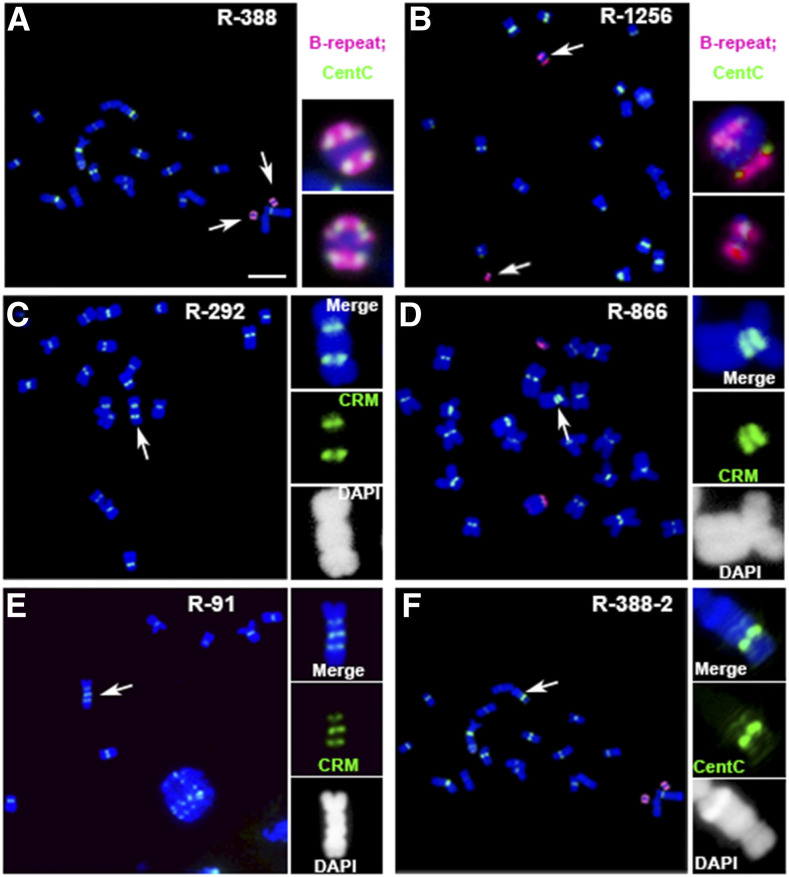Figure 2.
Examples of Multicentric Chromosomes.
If broken chromosomes fuse so that the centromere proximal portions join, a multicentric chromosome is formed. Unless the centromeres are in close proximity to each other, they may proceed to different poles during anaphases and break the chromosome. Dicentric chromosomes with two B-repeat containing regions such as event R-388 (A) and R-1256 (B) were found. The following are examples of multicentric chromosomes observed:
(A) In R-388, there are two similar dicentric chromosomes; both B-centromeric regions have strong B-repeat (magenta) and CentC signals (green). Scale bar = 10 μm.
(B) In R-1256, a large dicentric chromosome and a small one were present, of which both the B-centromeric regions have B-repeat (magenta) and CentC signals (green).
(C) The dicentric chromosome in event R-292 may become broken in the subsequent divisions or become stable by inactivating one centromere.
(D) In event R-866, the two centromeric regions may be fused together to form a larger one, as the two sites are in close proximity.
(E) and (F) Tricentric chromosome in event R-91 (E) and a chromosome with several CentC signals (green) containing regions in event R-388 (F) were found. These chromosomes are likely not stable, as multiple constrictions were present on the same chromosome. In the dicentric chromosomes, one centromere may become inactivated, or the two active centromeres may proceed to opposite poles during anaphases and cause breakage to produce monocentric derivatives.
(C) to (E) Magenta signals, CRM; blue, chromosomes counterstained with DAPI (but shown in grayscale in the insets for better visualization of the primary constrictions and knob heterochromatin).

